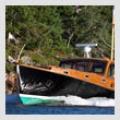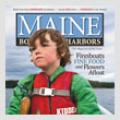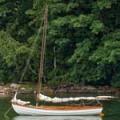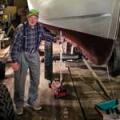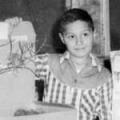Welcome Downeast
The Town, the Bays, the Mountains
—Appalachian writer Cynthia Rylant
Dear Friends:
The elegance of this enterprise of life on earth can be seen in one fallen leaf held in hand. Just a few months ago this leaf sprang glowing and green from the great life that is eternal. It took shape when still tiny and grew through the power of sun and water, and invisible linking patterns of carbon. All summer long it soaked up light and formed it into food. It pulsed with life. It breathed and hummed with the work of making the raw materials of every living thing: sugars, carbohydrates, cellulose. As the sun reached its solstice and began its decline, this leaf passed its prime and began to age, began to get weary, began slowly to shrink and falter, and harden. A few weeks ago it began to lose its green and show its red and orange and yellow. Then, frayed and brittle and dry, chewed by insects and marked by disease, it was torn from its twig by the wind and returned to the ground. Now it can be crumbled and fall in flakes, becoming new soil almost before it meets the ground. Not one piece of it is wasted, not one particle is lost, not one cell is withheld, not one molecule is kept back from the enterprise of life. Nothing of it will remain dead for long. Nature wastes nothing, throws away nothing, wants everything, uses everything again and again, to her benefit, and ours. We too, you and I, are leaves on the Tree of Life.
Natural events, November
Hackamatacks are turning to autumn gold, so striking against a blue sky it can take your breath away. They are preparing to lose their needles. Spruce and fir tend to grow ramrod straight, but hackmatacks like to grow a little curvy and sinuous, more like a dancer than a soldier. Dandelions and yellow hawkweed are still blooming in sunny places, despite an occasional frosting on the grass some of these mornings.
Hardwoods are mostly bare now with a couple of exceptions. As usual, the oaks are holding on to their brown leathery leaves throughout the fall season. These will likely be gone by the end of the year. If you are walking in the woods in January or February and see a tree with yellow or brown leaves holding on against the snow, you are likely looking at an American beech, which might hold its leaves until the sap comes up next spring.
As the leaves from the hardwoods fall in the forest, mosses, lichens, and fungi enjoy their brief time in the light. They live in the shadows of their taller cousins all summer long, but now they have their moment of glory.
Saltwater report
Harbor seals are finding their way south, where they will spend the winter around Long Island and the Jersey Shore. Females are pregnant now but will not give birth until they return in the spring. Our whales—humpbacks, finbacks, minkes, and right whales—including pregnant females, also migrate to warmer waters as far as Georgia and Florida.
If you care about the Maine coast, The Seaweed Chronicles by Susan Hand Shetterly is for you. It is both a textbook and a true story about seaweed and the real people who gather and grow and study and eat it. I found myself nodding my head in satisfaction as so many questions about these mostly hidden saltwater creatures were answered for me; questions that I’ve had for years. Reading this book was like a hearty meal when you’re hungry, with just the right dash of salty tang.
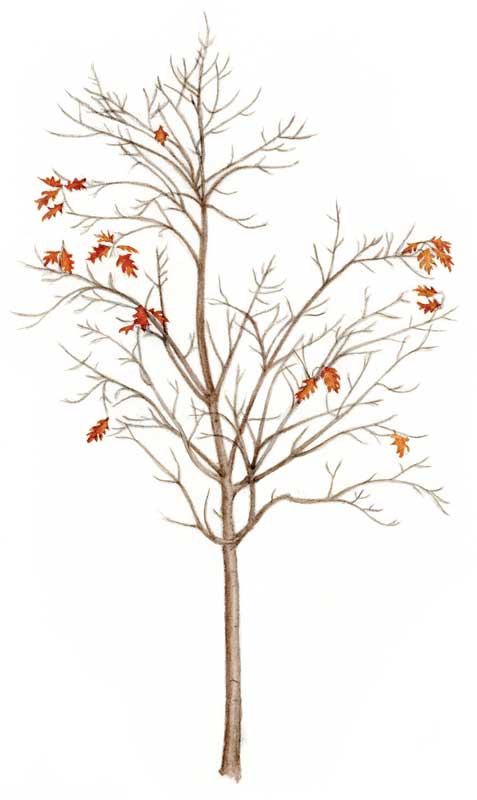 Illustration by Candice Hutchison
Field and forest report
Illustration by Candice Hutchison
Field and forest report
The gray-brown winter coats of the white-tailed deer are getting shaggy, and a good thing, too, because it’s the only winter coat they have—and no hat or boots. Our black bears have mostly “gone to ground” by now, too. They have loaded up on wild berries and beech-nuts to put on a layer of fat that will sustain them through their long winter’s nap; and they have denned up in a cave, or under a blow-down, or in a hollow log for the next several months. Chipmunks are also burrowed in and are true hibernators, though they do wake up now and then. Other small mammals like squirrels, skunks, porkies, weasels and fisher cats do not hibernate. They rest in their burrows during bad weather and emerge to forage on better days.
Squirrel report
My long career of trying to make our bird-feeder squirrel-proof ended years ago. Here’s how it happened. Frustrated by the marauders, I labored long and hard one day with ropes and stepladder to hang the feeder out of reach of even the most intrepid bushy tail. When done, I went back into the house to watch through the kitchen window as a gray squirrel poised very high in the pear tree with its tail flicking, hurled itself recklessly out into space, struck its head upon the feeder and fell to the ground as if dead. All of this also happened, by the way, before the tender eyes of my better half. The heroic squirrel somehow roused himself and proceeded to scratch his way up the clapboards on the outside of the house to hang by his front legs from the window sill, stare in the kitchen window at us, and roundly scold me for making his life so difficult. At this, Rebecca had had enough. Without another word she went into the pantry, scooped a quart of prime black oil sunflower seed from the bag, went out the kitchen door, and spread that load of seed on the ground under the bird feeder so that “the squirrels would not hurt themselves.” It was abundantly clear that my squirrel-proofing days were over, once and for all.
Celebratory events
Thanksgiving is nearly a universal practice. You would be hard put to find a culture or religion that does not gather to feast and give thanks. That is because giving thanks is a healthy survival practice, too. It acknowledges that we depend on the soil, the sun, the water, and other living things for our own lives. We do not destroy what we are grateful for.
With darkness descending all around us, what do we foolish humans naturally do? As if we could turn back the Great Darkness by our puny efforts, we light the lights, more lights, little twinkly lights, flickering lights, sparkling lights, glowing lights; not big lights, just little lights to light up the night. We strike fire and use it to keep us illumined and warm, while the nights get longer and the cold creeps in with the dark. With the entire Northern hemisphere leaning farther and farther away from the sun, we light tiny lights, we feast and sing, and give gifts to each other. Even when we know what is coming, we celebrate. It appears that those of us who dwell in the cold north have been observing these ancient ceremonies for ages upon ages. In the face of the Great Darkness, we hold up hope instead of fear, joy instead of despair: Human nature at its best.
Field and forest report, December
The first snows bring back another joy of the season, a window into the minds and motions of the many creatures who winter over in solidarity with us. There are the tracks of a crow circling a bit of scrap we had tossed out on the ground—approaching, retreating, circling and approaching again. And there is the brush of his pinions etched in the snow where the tracks end and the wind raised him high with his prize. There are the tracks of deer who waited until deep dusk to wander shyly out of woods and into the orchard to forage for frozen fallen apples, pulling away the frosted grass to find the sweet treasure beneath.
Animal tracks leave graphic records of the activities of many creatures for those who can read them. Following the meandering prints, patterns and punctuations, the imagination can picture the creature who left them and what daily task occupied it.
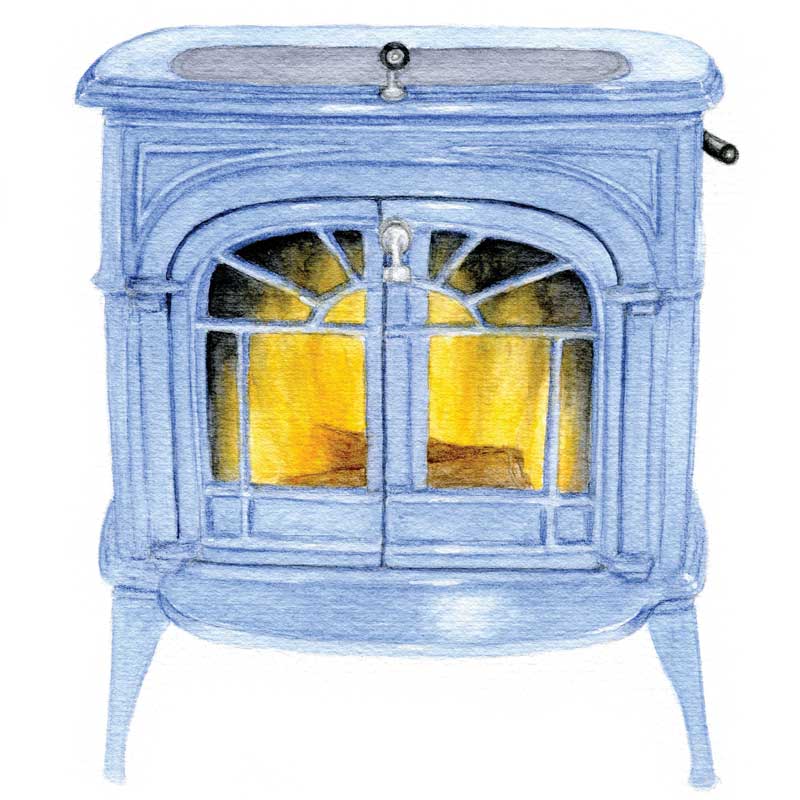 Illustration by Candice Hutchison
Illustration by Candice Hutchison
Natural events
Christmas trees are selling like hot-cakes these days. Tractor trailers loaded with trees have been leaving Maine for Boston and New York for several weeks now. Cut-your-own operations are mostly underway at tree farms all over the state. The most popular farmed Christmas trees in New England are probably the Douglas fir, native to the Northwest; the Fraser fir, native to the Appalachians; and the balsam fir, native to New England. The balsam fir also grows wild, of course, all over Northern Maine. It has a neat symmetrical shape even without trimming, and its silky soft needles and enchanting aroma just make you want to live the rest of your life in a balsam grove.
At Christmas we gather around the lighted tree with its bright ornaments hanging among the branches. Here is one scratched on birch bark years ago by the elderly father of a dear friend reading “Love is the greatest gift we can give each other.” Here is a heart made of beeswax by someone who was part of our wider family circle for a time but sadly drifted away. Here is one made of beads, a tiny quahog shell, a feather and colored string. Here is a caroling angel I snipped out of aluminum flashing when the children were young and we had little money. Our fragrant, wild-cut tree is trimmed with decorations from far and wide and long ago, family and friends, the living and the dead, and all just passing through. As memories of Christmases pass through the heart, it’s no wonder that the throat gets a little tight and the eyes well with tears at the sparkling sight and sweet smell of that Tree of Life by the window.
Rank opinion
We are too sophisticated to believe in miracles these days, too suave, too savvy. But if you look closer at Christmas, closer and closer until you get to the warm, soft center of it, you will find a real miracle there. At the darkest time of the year, along comes Christmas celebrating the height of helplessness, weakness, love and peace: a mother and a newborn child. It makes even the jaded and cynical become vulnerable for a few beautiful moments. Real Christmas miracles, every one.
Mountain report
A tiny weather-bent fir tree grows in a crack of the rock near the summit of Blue Hill Mountain, reflected in an ancient puddle nearby. Its trunk is gently curved, its branches and needles stunted. Who knows how many years it has drawn such sparse nourishment from the stingy rock. Yet there it stands, year after year, through winter, spring, summer and fall, through Solstice, Chanukah, Christmas, Kwanzaa, Ramadan, the evergreen embodiment of life, through all hardship, waiting for the light.
Seedpod to carry around
From Helen Keller: “The best and most beautiful things in the world cannot be seen or even touched. They must be felt with the heart.”
That’s the Almanack for this time. But don’t take it from us—we’re no experts. Go out and see for yourself.
Yr. mst. humble & obd’nt servant,
Rob McCall.
Rob McCall (1944-2023) lived in Brooklin, Maine. The selections in this almanack were excerpted from his archives.
Related Articles
Share this article:
2023 Maine Boat & Home Show

Join Us for the Maine Boat & Home Show!
Art, Artisans, Food, Fun & Boats, Boats, Boats
August 11 - 13, 2023 | On the waterfront, Rockland, Maine
Click here to pre-order your tickets.
Show is produced by Maine Boats, Homes & Harbors magazine.








